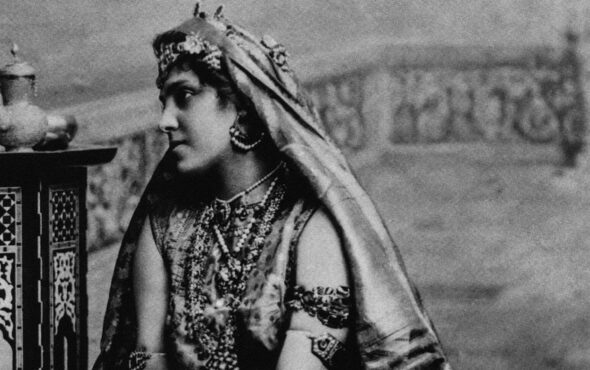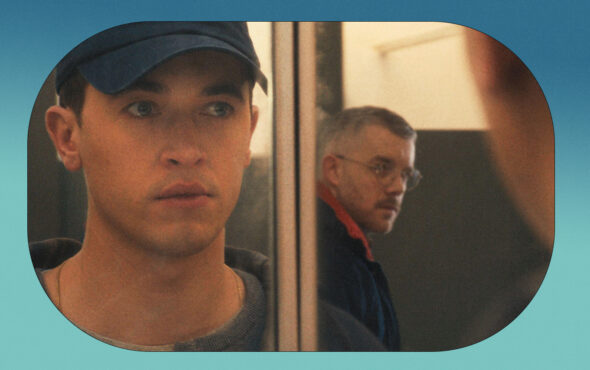
What comes to mind when you think about ‘home’? Generally speaking, an ideal ‘home’ is privately-owned and inhabited by a monogamous couple and their children. Conventionally, this family would be cis and straight – but increasingly, queer couples, too, are building nuclear family homes such as this.
Coupled and nuclear family living is a loving experience for many – but there are other kinds of love beyond romantic partners and family. Ancient Greek philosophy identified several kinds of love, ranging from eros (romantic and sexual), to agape (universal love), to philia (deep friendship).
More recently, the scholar and activist bell hooks argued that “a culture of domination [has raised the] … romantic relationship up as the single most important bond, when of course the single most important bond is that of community”.
Though the mainstream gay rights slogan ‘love is love’ suggests otherwise – queer people have always loved differently. But being queer is not just about non-straight romance and sex.
Hooks described queerness as “the self that is at odds with everything around it”. That is to say, queer love can be radical; queer love can challenge, disrupt and remake the heteronormative status quo. Often, this is about how care is organised. Commonly experiencing discrimination – or even abuse and exclusion – in families of origin, it makes sense that queer people have led the way with alternative models for care.
Some believe the nuclear family should be done away with altogether. It is well-known that families are often home to oppression and abuse – especially of women, queer people and children. The theory of family abolition – which is seeing a revival since its 1970s heyday – argues that we can do better than this in our caring for each other.
Sophie Lewis, author of Abolish the Family: A Manifesto for Care and Liberation, explains that family abolition is simply about “actually meeting humanity’s need for care,” where the nuclear family form is not capable of doing so. Ultimately, she argues, “we have to think in big, scalable, infrastructural terms about what that means: decommodified housing, free universal education, collective child rearing, mass kitchens and urban dining halls, public baths, and so on.” But we can already glimpse this radical future, she suggests, “wherever the many refugees from heterosexist, cissexist families find each other and find ways to survive by mothering each other.”
Whilst the nuclear family has become the ‘common sense’ way of understanding and organising love and care, it is not the only way – nor has it been historically. As recently as a few decades ago, there was a lot more communal living in the UK. But communal living is not your typical modern house-share set-up, where people live parallel lives and label their food. Communal living means people sharing not only space, but what is known as ‘social reproduction’, too: the labour of looking after each other, such as cooking, cleaning and emotional support.
From the late 1960s until the 1980s, communal living was an integral part of the gay and women’s liberation movements. Whether in squats or relatively affordable property, people came together to build alternative homes – often spaces in which people shut out from the nuclear family form could engage in relationships of mutual care.
Over the course of the 1970s, for example, members of the Gay Liberation Front (GLF) set up communes across London, including a squat at 78 Railton Road, Brixton in 1974. As well as a home of collective care, Railton Road was the UK’s first gay community centre – a hub for political organising and queer joy. Meanwhile, East London became the epicentre of women-only and lesbian communes. Bethnal Green was home to ‘Bethnal Rouge’ acid drag commune, a house and queer bookshop set up by a group of gender-nonconforming feminist queers.
As a historian of the GLF, Eric Wycoff Rogers explains that the group’s communal living was about much more than housing. “The commune was both a means and an end,” they say. As well as a way of organising care, the group “used communes to transform their subjectivity” – meaning, to unsettle and recreate conventional ways of being in the world.
The communes themselves was part of GLF’s project “to supplant the nuclear family as the foundation of domestic life and radically alter gender roles and sexual relations.” Non-monogamous relationships of different kinds were relatively common and raising children was often a group endeavour. In communal living of this kind, not only material resources such as food and even clothes were communalised – love was, too.
Multiple factors led to the decline of communal living among queer people in the UK: government crackdowns made squatting more difficult; property prices have risen exponentially; increasing heteronormativity has meant more gay people assimilating into straight culture, such as through state-sanctioned marriage. But to this day, queer people are at the heart of building alternative ways of living and loving. Communal living is not a relic of the past; in fact, it may be on the rise.
Speaking to GAY TIMES about her experience of living communally in a rented London house for the past seven years, Hannah – 31, a charity worker – becomes tearful, saying, “the house is pretty much the best thing in my life… it is a real source of support and love and care, and feels very special – especially in London which can feel really isolating and depressing.”
Hannah’s communal home of seven people has regular house meetings, where people check in with each other emotionally as well as refine household organisation. Everyone shares food, each person cooks on a different day, and there is a cleaning rota. Living communally “does require putting time in,” she says – but for her, the payoff is more than worth it: “general silliness, care and love” – which, she says, is shared between everyone in different ways. “There’s so much more energy to draw upon… lots of you there to catch each other.”
Ola, a 31-year-old creative worker, has been living communally in London for several years, and considers this lifestyle both in terms of choice and circumstance. Whilst they say they “gain so much” from living this way – including “shared meals, looking after each other in caring ways, methods of communication, common interests” – they also struggle with the precarity. Their previous household was uprooted after the landlord sold up: “I left behind my queer nest after five and a half years of communal life.”
Indeed, historian Rogers sees rising financial pressures as both a barrier to establishing sustainable communal homes, as well as a factor in their resurgence. But unaffordable housing is only one
reason for what they see as a rising interest in communal living “on a scale that has not been seen since the 70s”. They believe more people are interested in alternatives to nuclear family living, too, because of “a huge rise in non-monogamous relationships, a culture compelled by social justice issues, and the rising cost of commercial leisure”.
“We are at a crossroads in our socio-economic landscape where we have got to share resources in order to thrive and live well,” says Sal, a 35-year-old primary school teacher who lives with three other queer people, in a warehouse with many others. And whilst they believe communal living is “inherently queer” in its deviation from the norm, they think “the straights should get into it, too,” because, more often, they have the power to shift norms.
Whether everyone is willing or able to live communally is up for debate. Certainly, as a way of life it requires a commitment to collaboration and communication that looks different to navigating domesticity and love alone or with a partner. Unlike the notion of ‘falling in love’, collective care demands we look beyond ourselves or one other person, and towards love as a team effort to make sure everyone is cared for.
“I’m not saying everyone is like this but I do believe that everyone can be,” says Sal. Going forward, their “dream is to raise a child or children in an intentional, multi-family queer community where the young people are as much a part of it as the adults,” in a housing co-op with low living costs and access to nature.
“I think queer communal living is love activism,” they say.


